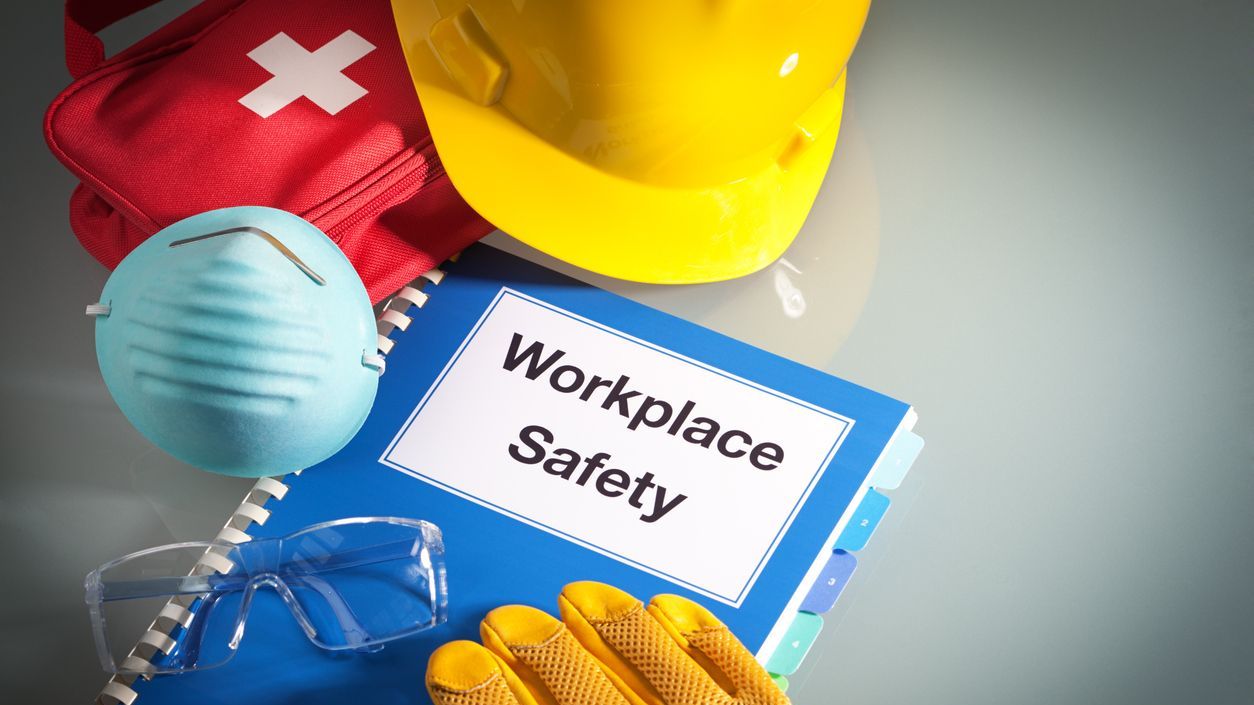Keeping employees safe and healthy is a cornerstone of a thriving business. When it comes to scheduling and staffing, there’s more to consider than just assigning shifts—it’s about creating an environment where safety training, emergency preparedness, and overall health and well-being are seamlessly integrated into everyday operations. By planning carefully and instituting strong safety protocols, employers can help protect their workforce from unforeseen risks, foster a culture of accountability, and ensure a stable, productive organization.
This comprehensive resource guide dives into everything you need to know about safety training and emergency preparedness within the context of employee scheduling. We’ll explore how proactive strategies like first aid training, CPR workshops, regular evacuation drills, and robust workplace violence prevention programs can all be woven into your staffing routines. We’ll also look at why scheduling solutions—such as Shyft’s employee scheduling—can be vital for organizations aiming to create safer workplaces. Let’s dive in and discover how to integrate health, safety, and well-being into your scheduling processes for a more resilient, prepared team.
1. Importance of Safety Training & Emergency Preparedness in Scheduling
Safety training courses and an emergency preparedness plan are not just optional add-ons; they’re critical aspects of any comprehensive employee management strategy. Aligning your scheduling process with structured safety training sessions and emergency response drills can help ensure that every team member gets the knowledge, confidence, and skills needed to handle workplace emergencies. Equally important is the time allocated during shifts for on-the-job training, so no one feels rushed or unprepared.
- Time Allocation for Training: Ensures each employee has set hours to attend safety training workshops without compromising daily operations.
- Coordination with Department Heads: Collaboration between schedulers, HR, and department managers streamlines the entire safety course schedule.
- Regular Refresher Sessions: Ongoing training helps reinforce essential safety measures and fosters a culture of continuous improvement.
- Consistent Communication: Employees must know where to find schedules, training materials, and team communication updates.
Whether you’re scheduling for a large corporate office or a bustling retail store, planning for safety is crucial. Aligning shifts around key training and emergency drills not only educates staff but also underscores your commitment to their well-being. For more insights on optimizing your workforce, check out different types of schedules that can be tailored to incorporate safety initiatives.
2. Identifying Essential Safety Training Elements
When designing a workplace safety workshop, managers should focus on targeted training elements that address the unique needs of their industry. This can mean anything from handling hazardous materials in a manufacturing plant to preventing slip-and-fall incidents in a fast-paced restaurant. Beyond these specialized concerns, all workplaces benefit from a solid foundation of emergency preparedness. Incorporate these core components into your scheduling routine to keep your workforce trained, informed, and ready to respond.
- First Aid & CPR Training: Teaching staff how to perform critical lifesaving measures, such as CPR or the Heimlich maneuver.
- Evacuation Plan & Safety Drills: Conducting regular emergency drills to familiarize employees with evacuation routes and procedures.
- Violence Prevention: Addressing workplace violence prevention policies, reporting protocols, and de-escalation techniques.
- Regulatory Compliance: Ensuring compliance with health and safety regulations relevant to your locale.
Make these topics part of your onboarding and recurrent training schedule. Consider using specialized software—like employee scheduling software for shift planning—to set reminders and ensure no critical safety training topics are overlooked. This systematic approach helps keep your workforce up-to-date on life-saving and regulatory best practices.
3. Structuring Emergency Response Protocols
A well-developed emergency response plan is at the heart of any robust safety strategy. Once you’ve identified potential hazards in your environment—be it chemical spills, weather threats, or fire risks—it’s essential to outline the steps employees should take in case of an incident. This guidance must be accessible, easy to understand, and rehearsed through safety drills. Scheduling your employees in a way that leaves room for recurrent emergency preparedness training ensures these protocols remain second nature.
- Roles & Responsibilities: Designate who will call emergency services, oversee evacuations, and administer first aid.
- Communications Plan: Establish how alerts will be disseminated—through real-time notifications, group messages, or overhead systems.
- Evacuation Routes: Map out clearly marked exit points that everyone reviews during regular workplace safety discussions.
- Post-Emergency Procedures: Outline how to conduct headcounts, handle injuries, and file incident reports for continuous improvement.
An effective emergency response plan depends on thorough practice and consistent feedback loops. Incorporate tasks such as monthly safety drills and post-training debriefings into your shift rotations. When employees understand their roles and your response protocols, they can react swiftly and calmly to minimize harm or damage.
4. Integrating Health & Well-Being Into Scheduling
Employee scheduling has a direct impact on health, safety, and overall well-being. Long, grueling shifts can exacerbate fatigue, while unpredictable schedules make it harder for employees to look after their physical and mental health. Creating flexible, predictable timetables can reduce stress levels, lower risks of on-the-job injuries, and improve employee morale.
- Rest & Recovery: Ensure that employees get adequate breaks and rest between shifts to prevent fatigue-related incidents.
- Open Communication Channels: Encourage staff to share any health or safety concerns, leveraging communication tools for availability and preferences.
- Alternate Shift Patterns: Rotate high-risk or physically demanding tasks to reduce the burden on one group of employees.
- Leverage Online Scheduling: Tools like Shyft’s shift marketplace can help staff swap shifts without last-minute chaos, supporting well-being and coverage.
By placing employee well-being at the center of your scheduling plan, you increase the odds of a healthier, more resilient team. For more information on balancing workload and employee health, take a look at flexible work arrangements that encourage a safer, more supportive environment.
5. Building a Culture of Ongoing Safety Education
Cultivating a strong safety culture goes beyond hosting a single safety seminar. It requires a continuous commitment to training resources, new regulations, and best practices. Scheduling regular check-ins where employees can voice concerns or suggest improvements strengthens trust and teamwork. Continual education also fosters a shared sense of responsibility, helping ensure that proactive safety measures become second nature.
- Scheduled Refreshers: Integrate refresher sessions for emergency response plan reviews and hands-on practice in your scheduling system.
- Guest Speakers & Workshops: Invite experts to present on specialized areas like time tracking systems for safety audits or mental health awareness.
- Digital Learning Modules: Provide online courses or training videos employees can access at their convenience.
- Incentive Programs: Reward employees who consistently adhere to or surpass safety guidelines, reinforcing positive behavior.
Scheduling these safety touchpoints consistently drives home the importance of preparedness. This attention to detail enhances both the mental and physical well-being of your workforce. For a comprehensive overview of on-demand training solutions, explore ongoing education opportunities that can be adapted to fit your scheduling needs.
6. Addressing Workplace Violence & Reporting Procedures
Workplace violence prevention is a critical aspect of any emergency preparedness plan. Even if your industry does not typically report high levels of workplace violence, having a system to address and de-escalate potential threats is crucial. Scheduling designated times for violence prevention training ensures employees know the signs, signals, and actions they should take if a situation arises. This heightened vigilance can reduce incidents and foster an environment of trust and psychological safety.
- Clear Reporting Protocols: Ensure employees understand the steps to report incidents, including using conflict resolution tools if needed.
- Manager Training: Supervisors must be trained to respond to reports swiftly and fairly, providing resources and support.
- Buddy Systems: Implement a policy where employees can request a partner during late or vulnerable shifts.
- Anonymous Tip Lines: Offer channels for confidential reporting to encourage individuals to speak up without fear.
Building a reliable reporting system into your workflow is integral to preventing minor conflicts from escalating. By integrating such training and awareness into your scheduling framework, you create a consistent, proactive approach to safety that benefits employees at every level.
7. Conducting Drills & Evaluating Effectiveness
No matter how thorough your emergency preparedness plan is, it needs real-world practice. Regularly scheduled safety drills—fire drills, lockdown simulations, or severe weather protocols—give employees hands-on experience. These exercises help you identify gaps, measure response times, and refine procedures. By making these drills a standard part of the scheduling process, you can systematically evaluate your team’s preparedness and adapt accordingly.
- Drill Frequency: Schedule drills at least once every quarter to ensure that new hires receive proper training, too.
- Realistic Scenarios: Introduce variations, such as blocked exits, so employees learn to adapt under pressure.
- Collect Feedback: After drills, solicit employee input on what went well or what could improve using feedback channels.
- Document & Review: Keep track of timing, compliance, and any issues faced. Adjust future safety procedures accordingly.
Routine drills can become part of a larger, continuous improvement cycle. When your organization actively tracks drill outcomes and integrates the insights gained into future scheduling and training sessions, you build a more adaptive, prepared workforce over time. Explore the benefits of creating shift schedules that reserve time for such essential drills and evaluations.
8. Implementing Shyft & Other Scheduling Tools for Safety
Balancing daily operational tasks with safety and well-being initiatives can seem challenging. This is where modern employee scheduling and communication platforms, like Shyft, can make a significant impact. By automating shift creation, sending out real-time alerts, and integrating online training modules, you can effortlessly weave safety measures into your daily workflow. With the right tools, it becomes easier to centralize resources, reduce scheduling conflicts, and remain agile in your emergency preparedness efforts.
- Flexible Scheduling: Use Shyft’s core platform to create or modify schedules on the fly, ensuring employees can attend emergency response training.
- Seamless Shift Swapping: Employees can handle last-minute emergencies or health concerns by easily swapping shifts using shift swapping tools.
- Centralized Communication: Keep all critical safety updates, policy changes, and training reminders in one place for quick reference.
- Analytics & Reporting: Track attendance for safety workshops, identify patterns, and allocate resources accordingly through advanced analytics.
Investing in a digital scheduling solution paves the way for a safer, more efficient operation. A solution that automatically integrates your safety drills and ensures everyone is aware of shift changes or training sessions can reduce confusion and bolster morale. Whether you manage a small startup or a multinational corporation, digital platforms streamline your path to a well-prepared, resilient workforce.
Conclusion
Safety training and emergency preparedness are essential elements of successful employee scheduling. You create an environment where employees feel confident, valued, and prepared by proactively weaving safety workshops, emergency drills, and well-being considerations into your daily workflow. This holistic approach minimizes risks and boosts team morale and operational efficiency.
The key is consistency. Continue to schedule regular safety trainings, refreshers, and drills. Keep communication channels open to address concerns. And consider leveraging flexible scheduling solutions—like Shyft—to ensure everyone stays informed about protocols and well-being initiatives. By integrating these foundational practices into your operations, you’ll lay the groundwork for a safer, healthier, and more productive workplace.
FAQ
1. How often should we schedule emergency drills?
It’s best to plan emergency drills at least once every quarter. This frequency ensures that all employees—including new hires—have firsthand experience with evacuation routes, safety equipment, and communication protocols.
2. What if my organization has a limited budget for safety training?
Consider free or low-cost resources, such as online tutorials, government guidelines, or local community workshops. Many nonprofits and professional bodies also provide discounted first aid or CPR training, making safety education more accessible.
3. How can I encourage employees to take safety training seriously?
Make safety training an integral part of your culture by offering incentives, providing regular refreshers, and highlighting real-life stories where preparedness made a difference. Visibility and consistency foster genuine employee engagement.
4. Are there specific guidelines for preventing workplace violence?
Best practices include a zero-tolerance policy, clear reporting channels, and regular training sessions focused on de-escalation tactics. Consider building workplace violence prevention into onboarding and recurrent training to reinforce its importance.
5. Can digital scheduling tools really help improve safety preparedness?
Yes. Digital scheduling solutions like Shyft can automate shift rotations, integrate safety training timelines, and send real-time alerts. This helps ensure employees are informed, prepared, and can respond quickly if emergencies arise.












